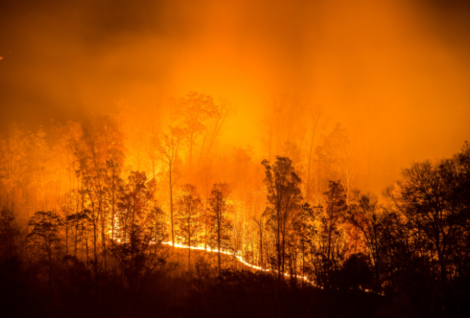Harnessing artificial intelligence as a firefighting tool of the future

INQUIRER.net stock photo
Researchers have developed artificial intelligence (AI) models that will eventually be able to predict wildfires and megafires everywhere in the world.
In the collective imagination, global warming is responsible for the increasing power and frequency of forest fires. However, this is only partially true. As paradoxical as it may seem, some researchers suggest that the growing strength of fires is also due to the efficient work of fire services. By systematically extinguishing burning vegetation, firefighters would have inadvertently created the conditions for more and more fires.
This observation is based on the recent discovery of the essential role played by wildfire in the periodic regeneration of forests: the theory is that the oldest woods will naturally catch fire from the sun’s heat to make way for fresh growth.
The occurrence of megafires
This cycle is now being amplified by climate imbalances, which have disrupted the frequency of fires. As a result, forest fires are increasingly powerful and difficult to control to the point where we have now entered an era of megafires like those that have been observed in Australia, the Amazon, and more recently in Siberia. Footage of millions of acres of burnt vegetation and hundreds of thousands of dead animals have raised awareness of the environmental and safety risks posed by such huge blazes.
In this context, prevention is the best remedy. Scientists and firefighters working together to develop new tools that can take into account the complexity of how fires emerge and spread have turned to artificial intelligence to provide solutions.
Artificial intelligence vs. megafires
The main advantage of artificial intelligence is its capacity to rapidly perform highly complex calculations that humans would take several days to resolve. For these calculations to be accurate, researchers have to feed massive amounts of information on past fires and associated meteorological conditions and vegetation into a computer. The goal is to enable the machine to mathematically link all of the data in a model that scientists can then use to predict future wildfire outbreaks.
The archiving work necessary for projects of this kind can take months, and even years, to optimize the AI agent’s understanding of the environment that it is supposed to supervise.
Several research groups are already experimenting with these futuristic firefighting tools, among them teams at the WiFire Lab in California, USA and the University of Alberta in Canada. Thanks to predictions provided by these AI agents, among other things, firefighters will soon be able to take advantage of recommendations for prescribed burns to save certain parts of the forest while allowing the natural process of forest regeneration to take its course. CC
RELATED STORIES:
Hundreds evacuated as wildfires rage in Florida Panhandle